Exotic Hardwood Floors
If the words 'exotic hardwood floors' conjure up visions of rooms graced with dark, rare woods from far away lands, you're not too far off the mark. Exotic wood floors, like reclaimed wood flooring, offer a unique style difference from standard hardwood varieties.
Alluring colors, durable hardness and let's face it, interesting conversation starters, are all hallmarks of exotic wood floors.
So if you're looking for something more than just plain vanilla oak to dress up your dining room, exotic wood offers some enticing attributes that might even get the dinner crowd to take notice. Read on to find out what's available and if they might be a good fit in your home.
What Exactly Is 'Exotic' Wood?
There's really no official definition of what constitutes exotic wood nor is there a list that defines which woods are considered exotic.
That begs the question, if you live in Peru and grow up around stands of Jatoba trees (aka Brazilian Cherry), are they still exotic? You might say it's open to interpretation. Regardless of how you want to define them however, if you're looking for the more uncommon wood species like Canarywood, Brazilian Teak or Patagonian Amberwood, you'll find them under the "exotics" label.
Some Examples To Consider
If you're not too familiar with what exotic wood looks like here are some swatches to whet your appetite. To be honest though they don't do justice to what some of these woods look like on a full floor. Your best bet is to view some brochures and/or get out to see some of these unique woods firsthand to appreciate their appeal.| Wenge - Native to Africa and characterized by a very dark heartwood with blacks and dark browns. It's high density also makes it a very hard wood. |
| Teak - Indigenous to Southeast Asia Teak was traditionally used because of its natural oils where resistance to moisture and the elements was needed. |
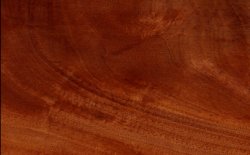 |
Mahogany - Mahongany is actually a more common name that's been applied to several tree varieties in the Swietenia genus. Species include Pacific Coast Mahogany (Swietenia humilis), Honduras Mahogany (Swietenia macrophylla) and West Indian Mahogany (Swietenia mahogoni). |
| Australian Walnut - Not a relation to the American Walnut, Australian Walnut is characterized by varying shades and hues of brown between the darker heartwood and lighter sapwood. | 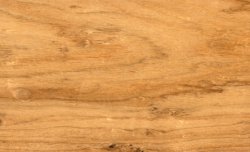 |
 |
Curly Koa - Native to Hawaii and once used to build Polynesian canoes, wood from the Koa tree (Acacia koa) has a rich, darker heartwood with reddish brown hues. |
| Bubinga - From trees found in Equatorial Africa Bubinga exhibits a tough hardness to accompany its rich coloring which includes reds, browns and purple shades. | 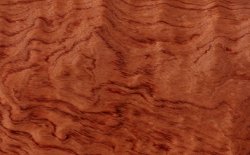 |
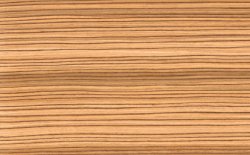 |
Zebrawood - Zebrawood, or Microberlinia brazzavillensis, gets its name from it signature light color interspersed with dark striping. |
| Rosewood - Classified under the genus Dalbergia, several varieties of rosewood exist, characterized by dark hues. | 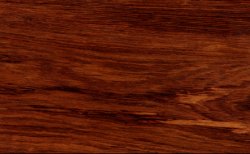 |
The woods shown above are just a sample of the various kinds of woods and looks available with exotic hardwood floors. Some of these woods are very hard, due to their density, which gives them added benefit above and beyond their beauty. The harder the wood the better it is able to stand up to the dents and wear and tear it will eventually experience.
Another benefit is their natural color. Many of these exotic hardwoods have a natural depth of color that doesn't require staining to obtain a darker, more rich shades.
What Should I Know Before Making A Decision?
The following points are things you should consider if you're thinking about purchasing exotic hardwood floors.
- The basics of choosing a wood floor still apply
If you haven't already, you should become familiar with the key points of choosing a wood floor. Room choice, lifestyle, the amount of typical traffic the floor will see all factor into the decision making process. Being familiar with the terminology as well as some of the 'technical' aspects of a wood floor like moisture content, stability and hardness also helps. - Some exotic woods are sensitive to light (photosensitive)
Photosensitive woods like Jatoba (Brazilian Cherry), Rosewood, Tigerwood and others will darken over time. Objects on the floor like area rugs will cause those areas to be lighter than surrounding areas exposed to the light. Varying their location on the floor periodically will help achieve a uniform color over time. - Harvesting of some exotic woods may have a negative environmental impact
The wood used for some exotic hardwood floors are from tree species that are stressed or possibly endangered from over-harvesting. Ensuring that the wood you intend on buying is from a forest that practices sustainable management will ensure no harm was done to the environment.Check to see that the wood is certified by the Forest Stewardship Council (FSC). The FSC is an international non-profit organization chartered with overseeing the proper management of the world's forests. Products that carry FSC certification have met the standards for responsible harvesting and management of those resources and the economic viability of the locally affected communities. The FSC also has the process in place for chain-of-custody certification that verifies proper resource management from source to end product.
- Exotic woods have many names - know what you're getting
Dealing with the names given to various wood types is akin to the old Abbott and Costello "who's on first?" comedy routine. Names like "Brazilian Cherry" and "Brazilian Maple" are typical trade names applied to tropical wood species. In this example however, you're not getting cherry or maple but rather Jatoba (Hymenaea courbaril) and Pau Marfim (Balfourodendron riedelianum), two tropical hardwoods.You'll even see differences among suppliers dealing in the same wood species. To put things on a level playing field, deal with the botanical names of these woods (like the genus/species Hymenaea courbaril mentioned above - you can look them up or ask the supplier). That way you'll be comparing apples to apples when comparing products among suppliers.
What Does It Cost?
Despite their name, not all exotic wood floors come with exotic prices. Their cost really depends on the specific type of wood you choose and where you buy it.
For example, 3" x 3/4" Brazilian Cherry (Jatoba) can be had for $3 to $10 per square foot, uninstalled. Teak can run from $6 to $13 per square foot. On the higher side, Wenge will cost upwards of $20 per square foot. Wider planks will cost more than their narrower counterparts regardless of wood type.
Where you buy the wood plays a role too. Online flooring retailers generally have lower prices and put their products on sale from time to time. Freight charges will be an added cost unless you find a source with a deal on free shipping.
To give you some concrete examples, here are some prices for exotic wood flooring based on wood type. They represent a random sampling from various sources:
| Wood Species | Cost Range Per Sq. Foot |
| Brazilian Cherry | $3 - $10 |
| Teak | $6 - $15 |
| Rosewood | $4 - $9 |
| Tigerwood | $4 - $10 |
| Santos Mahogany | $4 - $10 |
| Brazilian Walnut | $4 - $10 |
| Wenge | $17 - $20 |
The bottom line on cost is that it pays to shop around. The more 'common' exotic woods, like Jatoba for example, are more readily available and are typically priced on the lower side. Wenge has limited availability so you'll see fewer sources and will pay more.
Just remember to keep in mind the source of the wood when you do your shopping. Not all wood is obtained using sustainable forestry management practices. Some exotic wood is harvested illegally and sometimes at the expense (not the benefit) of the local communities. Wood obtained in this way doesn't offset even the lowest price you may find.
Where Can I Buy It?
Exotic hardwood floors aren't difficult to find as they're produced and sold by numerous sources, from large floor manufacturers to smaller specialty companies.
The larger floor manufacturers like Armstrong®, Shaw® and Mannington® all carry exotic woods as part of their hardwood product lineup. You can find their products at home centers and other retailers specializing in flooring.
There are also other smaller specialty companies that deal in exotic hardwood floors. Many of these sell the products directly or through online flooring retailers, rather than through brick-and-mortar floor stores.
If you're interested in finding exotic flooring from sellers that have FSC certification (meaning the wood is sourced from sustainably managed forests), check out the following suppliers:
| EcoTimber® | www.ecotimber.com |
| Toucan Teak | www.toucanteak.com |
| GreenSage | www.greensage.com |
| BR111™ | www.br111.com |
| Armstrong® | www.armstrong.com |
| Shaw® Floors | www.shawfloors.com/hardwood-floors |
If you'd like some help finding local sources for hardwood flooring, whether it be for an exotic hardwood species or something more common, fill out the form below. What it will do is locate wood flooring contractors in your local area who can provide you with a free estimate for your particular project. These contractors will contact you at your convenience and all estimates are no-cost and carry no obligation.
It's a helpful way to have qualified leads come to you and takes the hassle out of searching your local area to find potential candidates.
Here's More Related Info That Might Be Helpful...
Choosing Wood Flooring - Choosing the right wood flooring might seem like an overwhelming task. This article makes it easy to learn what you should know about wood floors and how to go about making the right choice.
Birch Wood Flooring - Discover a wood floor with a unique and beautiful look that has all the benefits of other hard woods.
Wide Plank Wood Flooring - Wide plank flooring offers a distinctive style that's different from standard narrower width wood floors. Find out what's available in this article on wide plank wood floors.
Reclaimed Wood Flooring - Some of the most unique wood floors are made using reclaimed wood. Find out how to go about choosing a wood floor that has a history behind it.
